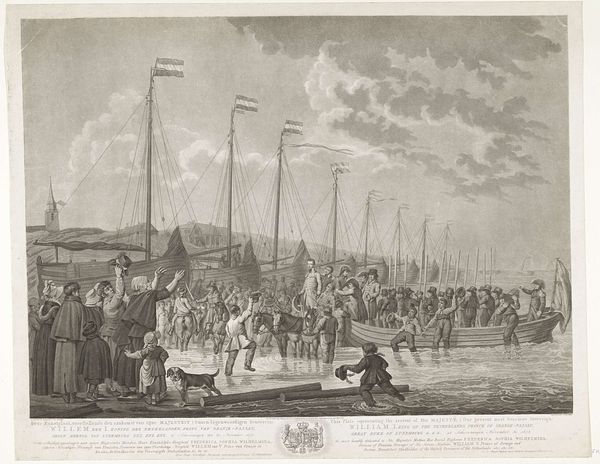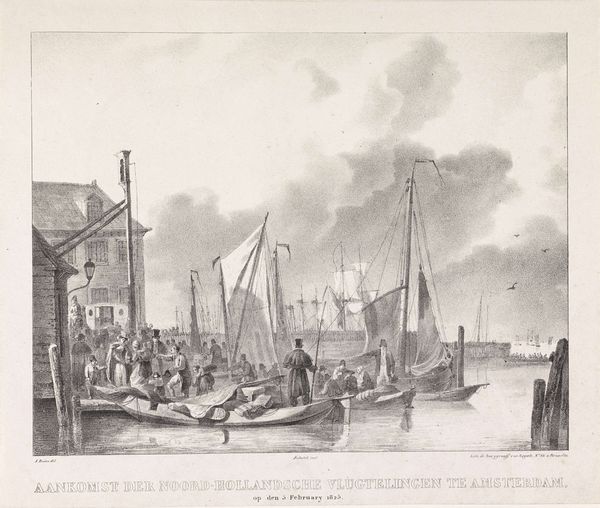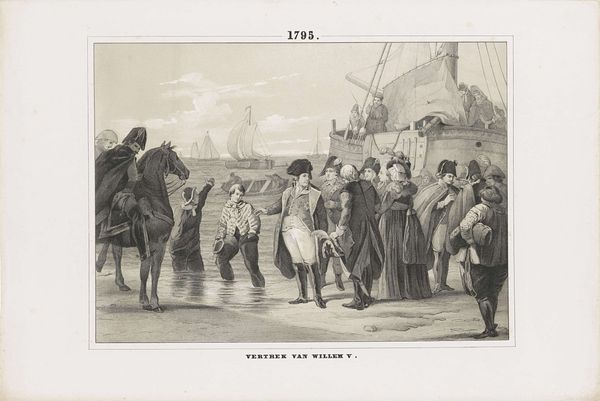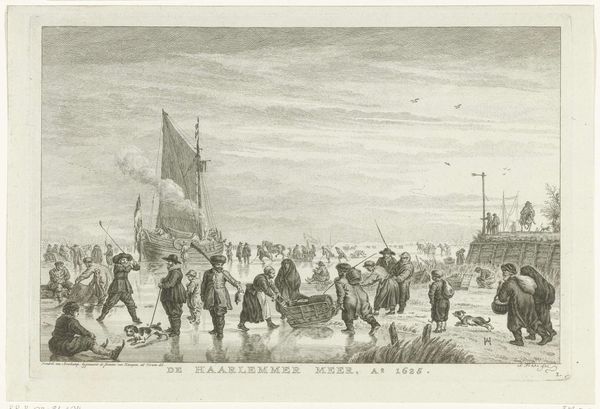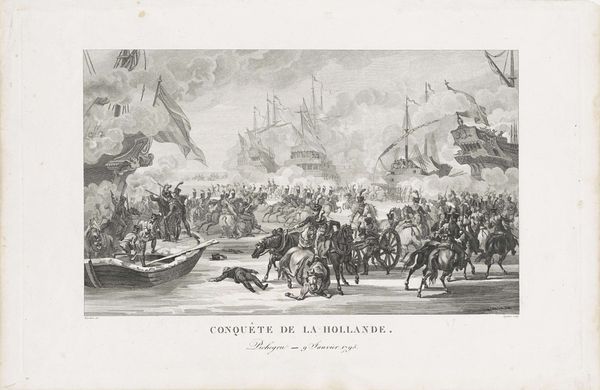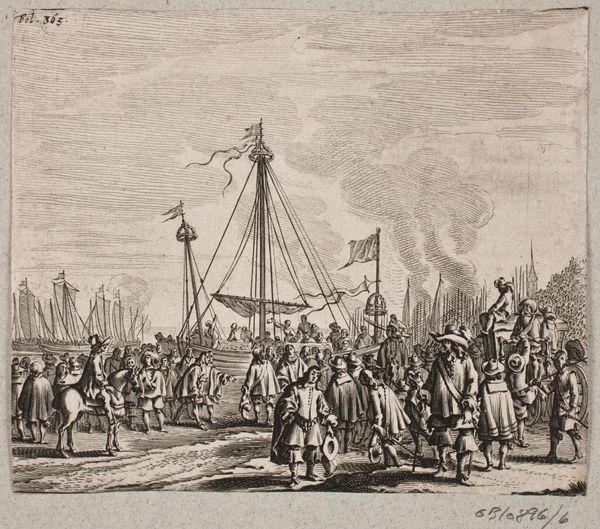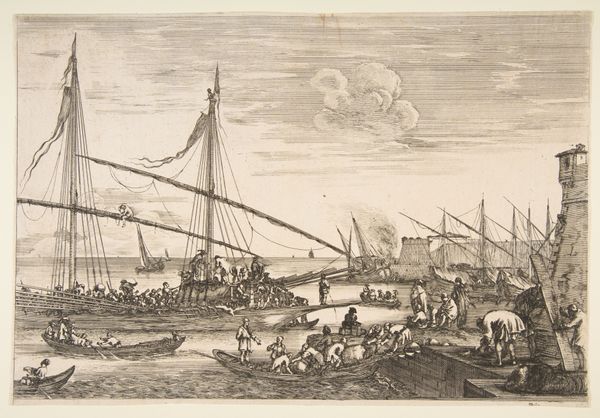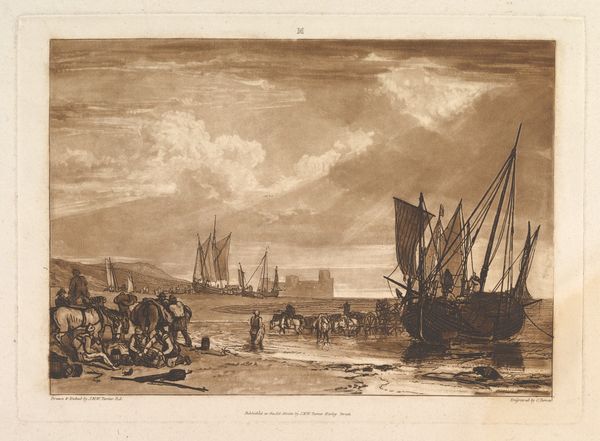
Dimensions: height 158 mm, width 232 mm
Copyright: Rijks Museum: Open Domain
Curator: Today we're observing "Arrival of the Prince of Orange at Scheveningen, 1813", a print crafted by H.J. Dekker between 1853 and 1861, currently housed here at the Rijksmuseum. Editor: What strikes me is how everyone is wading right into the ocean! It feels almost chaotic, yet strangely jubilant. Like, 'Huzzah, he's here! Let's get our feet wet!'. Curator: Indeed. Notice how Dekker masterfully uses linear perspective to draw the eye towards the horizon where the Prince makes his entrance. The tonal range, from the dark foreground figures to the faint lines of the ships, creates a powerful depth. Editor: I'm also drawn to the contrast in texture; the choppy waves, then those tall ships looming in the background, all that contrasted against the figures and the crisp rendering of the clothes. And the dog, you can't miss the dog, sniffing at something very important near the left corner! Curator: An excellent point! That textural contrast highlights the transition from a period of French rule back to Dutch independence, a shift embodied by that enthusiastic crowd. It signals the change and transformation of societal structure. Editor: Absolutely. It makes you think about how history is really made of all these little moments happening all at once, a kid chasing his hat in the waves, the dog and his discovery, the big flags snapping in the wind, while everybody gets their socks wet to greet their Prince. You sense how every single person plays their small role in grander historical currents. Curator: Precisely, Dekker captures that through the dynamic composition and nuanced details. It is a reminder that history is never monolithic but a symphony of interconnected events. Editor: So, as you move on through this exhibition, keep your eye out for these unexpected juxtapositions between grand narratives and intimate individual moments, because you'll find them, swimming right in the surface of these wonderful historical works! Curator: And consider how those micro-observations serve the larger structural narrative conveyed, shaping our interpretation of the past through line and form.
Comments
No comments
Be the first to comment and join the conversation on the ultimate creative platform.
